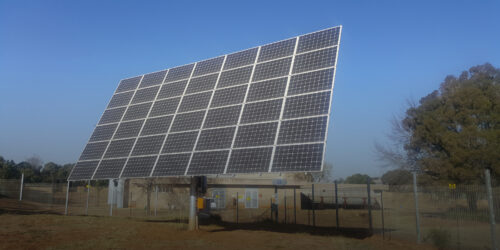Despite Challenges, Urban Microgrids Increase Resilience

This blog was originally published on Chemonics website.
By Michael Ashford | Lisa Pagkalinawan
Urban microgrids can harness underutilized sources of low-emission energy in cities — including rooftop solar, small hydro, and biogas from organic waste streams and treatment plants — and spur economic development.
Urban microgrids are high on the global development agenda. They are attractive for many reasons, most recently for their relevance to climate change adaptation and mitigation. They have proven resilient to extreme weather events, and, because they create commercial opportunities for low-carbon generation technology, they can reduce greenhouse gases from the urban sector in the long term. Clean technologies captured by urban microgrids include small-scale renewable energy and waste-to-energy technology, and burgeoning opportunities with smart grid/smart cities technologies like electric vehicles. For these reasons and more, urban microgrids have become integral to achieving Sustainable Development Goals 7 (affordable and clean energy) and 11 (sustainable cities and communities), bringing us closer to equitable and efficient economic growth around the world.
Urban microgrids were a major topic in June at the annual Asia Clean Energy Forum, hosted by the Asian Development Bank in Manila. Presenting on behalf of Chemonics, we made a case for the viability of urban microgrids in specific contexts.
What is an Urban Microgrid and Why Develop One?
An urban microgrid is an electrical distribution system that can be connected to a larger energy grid or operate in “island mode” on its own. It can be independently governed by a private entity or operated as part of a larger utility. The microgrid’s business model determines its customers base. If privately held and selling excess power back to the grid, customers are both the distribution company buying that power and the end users (or consumers) under its jurisdiction. In any case, a common characteristic of urban microgrids is that they often include generating “users,” — or prosumers — that both consume and produce power. These could be small businesses, buildings, or residences — like smart buildings with small generation systems or households with their own rooftop solar systems. When we all have electric cars with batteries that give power back to the grid at night, we will all become prosumers!
Why set up a microgrid in an area already served by an electric utility? After all, it must be more economical to rely on a system that is already in place — namely the “grid” — and many electric utilities would likely resist microgrids encroaching on their service areas. Despite prevailing opinions, there are some persuasive reasons for developing urban microgrids:
1. Resilience. Given the effects of climate change, developed countries increasingly require access to power following disasters. Formerly reliable centralized systems now experience shutdowns caused by severe storms that cost billions of dollars in damages, repairs, and productivity. Reliable power is especially important for essential services, such as hospitals, water supply, and emergency services. In developing countries, many of which experience long blackouts, uninterrupted power is essential for economic growth.
2. Renewable energy. Because they use renewable energy, microgrids are often installed so public or private developers can meet greenhouse gas emission reduction targets. Renewable energy with battery storage, through microgrids, can provide emission-free power to meet climate change mitigation targets and other air quality requirements.
3. Lower costs (sometimes). Although urban microgrid power is often more expensive than grid power, in some cases costs are lower. For example, providing reserve power to the grid from urban microgrids during peak load periods can often be cheaper than other “peak” reserves. Additionally, because power production and consumption are co-located, micro-grids avoid the costs of losses from high voltage transmission and distribution. Because of advantages like these, microgrids are growing quickly around the world, according to major industry players, and development financing institutions are offering concessional financing for microgrid developers.

